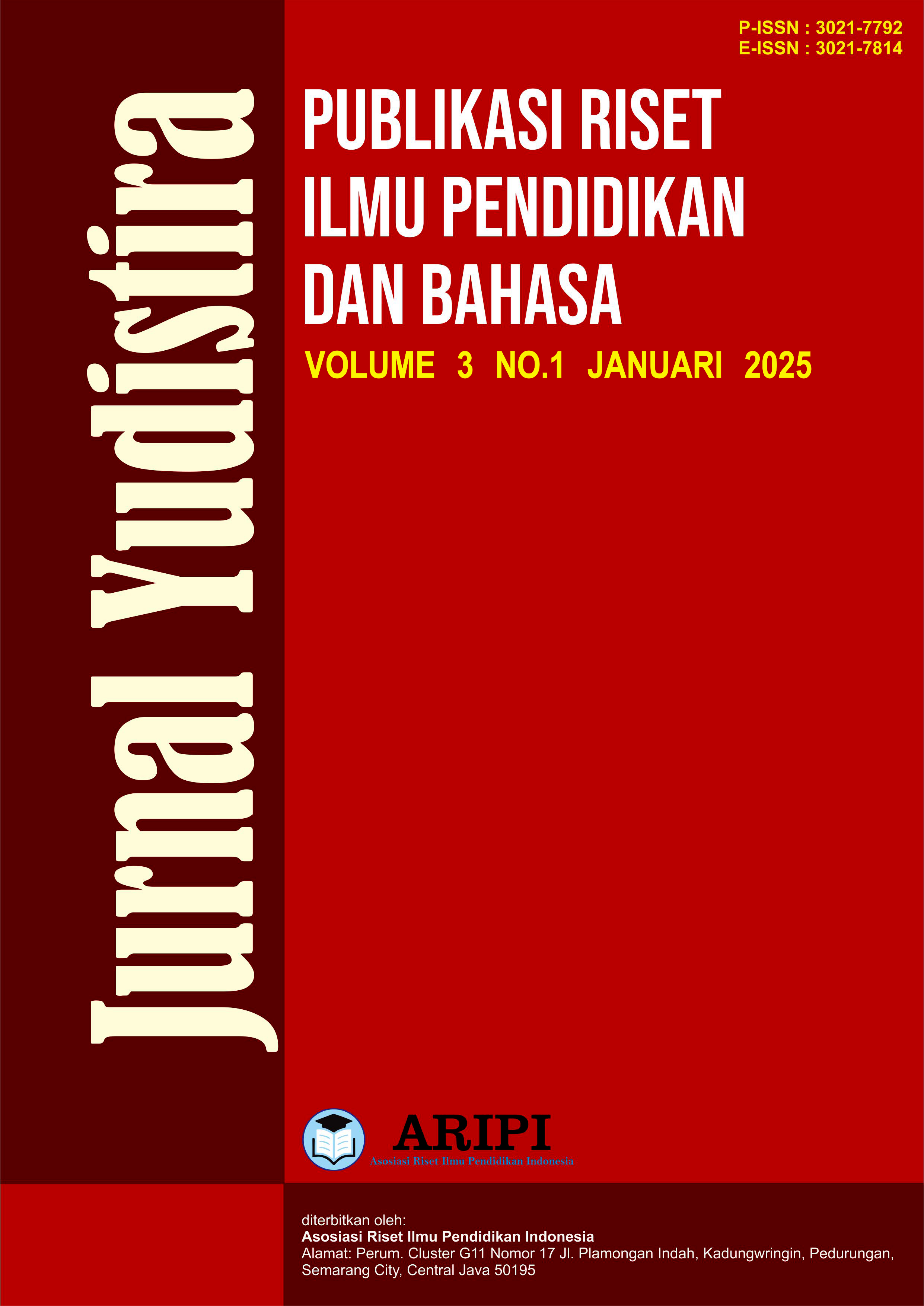Pengelolaan Kelas dengan Menerapkan Aplikasi AR di Sekolah Dasar
DOI:
https://doi.org/10.61132/yudistira.v3i1.1596Keywords:
Class management, Augmented Reality (AR), elementary school, teacher trainingAbstract
Effective classroom management is very important to create a conducive learning environment for students, especially in elementary schools. Along with technological developments, Augmented Reality (AR) applications have emerged as a tool that can increase interactivity and attractiveness in the learning process. This article discusses the application of AR applications in classroom management in elementary schools to increase students' interest, motivation and understanding of subject matter. AR applications allow students to interact directly with virtual objects that enrich their learning experience, both in visual and kinesthetic learning. The main benefits of using AR include increased student engagement, visualization of complex material, and more structured and engaging classroom management. However, its implementation also faces challenges such as limited technological infrastructure and training needs for teachers. This research suggests that schools can prepare supporting devices and provide adequate training to teachers to optimize the use of this technology in learning. Thus, AR applications can be an innovative solution in creating a more interesting and effective learning experience in elementary schools.
Downloads
References
Akçayır, M., & Akçayır, G. (2017). Advantages and challenges associated with augmented reality for education: A systematic review of the literature. Educational Research Review, 20, 1-11. https://doi.org/10.1016/j.edurev.2016.11.002
Alharthi, A., & Alharthi, S. (2021). The use of augmented reality in education: A systematic review. International Journal of Emerging Technologies in Learning (iJET), 16(12), 185–195. https://doi.org/10.3991/ijet.v16i12.22657
Puspitasari, D. S., & Andriani, M. (2023). Penggunaan aplikasi augmented reality untuk mendukung pembelajaran IPA di sekolah dasar. Jurnal Inovasi Pendidikan, 9(1), 77-85.
Suryani, S., & Ernawati, E. (2022). Pemanfaatan teknologi augmented reality untuk meningkatkan minat belajar siswa di sekolah dasar. Jurnal Pendidikan Teknologi dan Kejuruan, 28(2), 190-199.
Azuma, R. T. (1997). A Survey of Augmented Reality. Presence: Teleoperators & Virtual Environments, 6(4), 355-385.
Bower, M., Howe, C., McCredie, N., Robinson, A., & Grover, D. (2014). Augmented Reality in Education–Cases, Places, and Potentials. Educational Media International, 51(1), 1-15.
Chen, C. J., Wei, C. W., & Lee, C. C. (2017). Mobile Augmented Reality Learning: A Study of the Effects of Context and Interactivity on Student Learning Motivation and Performance. Educational Technology Research and Development, 65(3), 651-670.
Huang, W. H. Y., Lin, C. H., & Cheng, S. C. (2016). A Model for Designing Augmented Reality Learning Environments for Developing Spatial Abilities: A Case Study of the Interaction Design of an AR App for Learning About Science. Computers in Human Behavior, 62, 309-319.
Slameto. (2010). Pembelajaran dan Faktor-faktor yang Mempengaruhinya. Rineka Cipta.
Syamsuddin, A. (2021). Teknologi Pembelajaran dalam Konteks Pendidikan Dasar. Jurnal Pendidikan, 22(3), 150-160.
Yulianto, Y. (2020). Penggunaan Teknologi Augmented Reality dalam Pembelajaran Sains di Sekolah Dasar. Jurnal Pendidikan dan Teknologi, 9(2), 45-58.
Arikunto, S. (2010). Prosedur Penelitian: Suatu Pendekatan Praktik (Edisi Revisi). Jakarta: Rineka Cipta.
Cohen, L., Manion, L., & Morrison, K. (2007). Research Methods in Education (6th ed.). London: Routledge.
Creswell, J. W. (2014). Research Design: Qualitative, Quantitative, and Mixed Methods Approaches (4th ed.). Thousand Oaks, CA: Sage Publications.
Kemmis, S., & McTaggart, R. (2014). The Action Research Planner. Singapore: Springer.
Azuma, R. T. (1997). "A Survey of Augmented Reality." Presence: Teleoperators and Virtual Environments, 6(4), 355-385.
Bower, M., Howe, C., McCredie, N., Robinson, A., & Grover, D. (2014). "Augmented Reality in Education – Cases, Places, and Potentials." Educational Media International, 51(1), 1-15.
Deterding, S., Dixon, D., Khaled, R., & Nacke, L. (2011). "From Game Design Elements to Gamefulness: defining" Gamification"." Proceedings of the 2011 Annual Conference on Human Factors in Computing Systems, 1-4.
Hwang, G. J., & Chen, P. Y. (2017). "A Conceptual Framework for Designing Augmented Reality-based Learning Activities." Educational Technology & Society, 20(4), 162-172.
Li, W., & Chen, S. (2017). "The Application of Augmented Reality in Education." International Journal of Advanced Research in Computer Science and Software Engineering, 7(7), 60-65.
Downloads
Published
How to Cite
Issue
Section
License
Copyright (c) 2025 Jurnal Yudistira : Publikasi Riset Ilmu Pendidikan dan Bahasa

This work is licensed under a Creative Commons Attribution-ShareAlike 4.0 International License.






